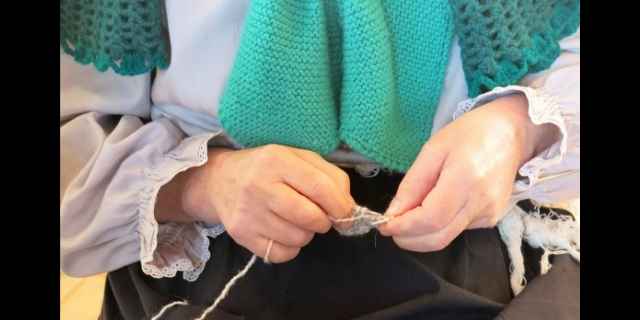Some sports call the tops that players wear shirts and some call them jerseys. You’ll hear both terms in rugby.
So, why are rugby jerseys called jerseys? It’s an interesting story that goes way back to medieval times.
Named From The Island Of Jersey

The island of Jersey is part of the Channel Islands. Although it is close to the French coast, the island is politically connected to the United Kingdom.
It’s known for two things. One of these is Jersey cattle, famous for their rich milk.
The other is a special type of knitted garment made for fishermen from the medieval era. The fishermen wore knitted underwear and long-sleeved tops as outerwear.
The tops became known as jerseys.
Knitted Instead Of Woven
Some types of garments were woven on a loom, while others were knitted with long needles.
Jerseys are knitted. This means that they are stretchy and have more give than woven material. It gave the fishermen more ease of movement.
However, they have a tight weave that gives them warmth.
When Did Rugby Players Start Wearing Jerseys?

The earliest rugby players didn’t wear the kind of wool jerseys favored by fishermen.
They wore white flannel shirts when the sport originated in the mid-19th century. These were simply the type of shirts worn by gentlemen on the street.
This was impractical for a rough and tumble sport. The shirts tended to rip early in a match.
And rugby was also a winter sport played during the colder months in England. The flannel shirts weren’t much protection against the cold.
The players soon adopted the tight-knitted heavy wool jumpers that originated on Jersey island. These were widely known as “jerseys”.
Wool Jerseys
Jerseys were synonymous with wool and rugby players wore wool garments for decades.
This wasn’t just in England and other European countries.
The All Blacks embarked on a tour of Britain, Ireland, France, and Canada from September 1924 to February 1925. This famous team was unbeaten. They have since been known as The Invincibles.
These All Blacks also wore wool jerseys that were wide and baggy.
Switching From Wool To Cotton

Knitted wool had some disadvantages. Although warm in winter, they soaked up rain and became increasingly heavy through a match.
They became so hot in Spring that young players could collapse in the heat after a lot of running and tackling.
Other sports had already adopted cotton before rugby teams started to shift to the lighter material. Professional rugby teams followed suit.
Further developments in sports garments led to mixing cotton with synthetics for more durable material.
Still Called Jerseys
Due to the change in material, rugby tops have come a long way from the original Jersey fishermen’s outer garments.
They are no longer wool, but we still call the tops jerseys.
What About Guernseys?
You may hear some rugby tops called a guernsey in Australia. These tend to be sleeveless tank tops worn for practice sessions.
But how did these ones get their name?
Well, I mentioned that Jersey was part of the Channel Islands. There’s another island in this archipelago called Guernsey.
I haven’t heard this term used outside of Australia.
Other Names For Jerseys
Different regions use alternative names for rugby jerseys that can take a bit of getting used to.
Jumpers
You will often hear jerseys called jumpers in the United Kingdom and Ireland.
Ever wonder how jumpers got their name? Don’t think that it’s got anything to do with lineouts or jumping for a high ball!
The name comes from France where a loose coat was called a “jupe”. This kind of thick smock was adopted in England by workmen for outdoor wear.
Sweaters
You will also hear sweaters being used in the United States and Canada.
Unlike jumpers, the name comes from exactly what you’d imagine!
People playing sport would sweat from the activity. So, the tops they wore were “sweaters”.
Tops
A top is a fairly generic name that covers jerseys, t-shirts, and training vests.
Basically, anything that covers your torso.
Shirts
When we refer to shirts, we’re usually talking about short-sleeved tops.
The actual word goes back to the Vikings when the Norse word for a short tunic was “skyrta”. The word entered Old English and was spread by the Anglo-Saxons.